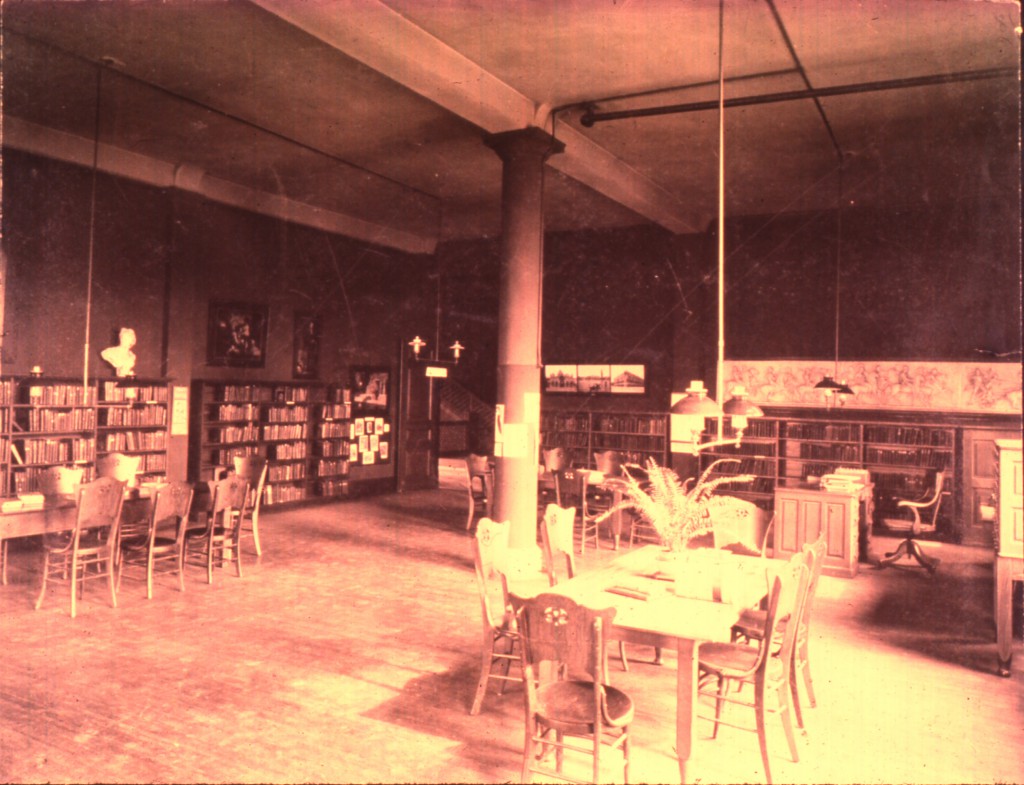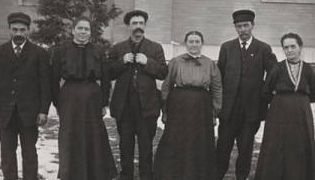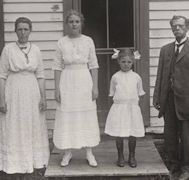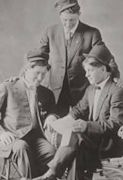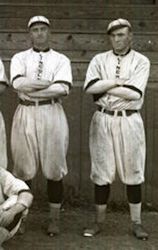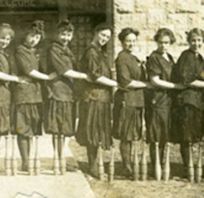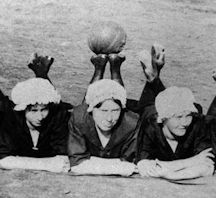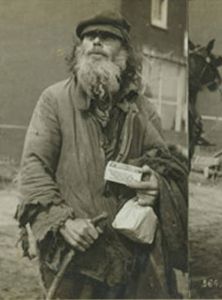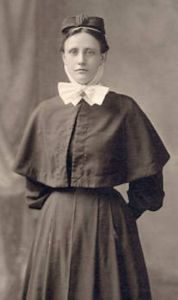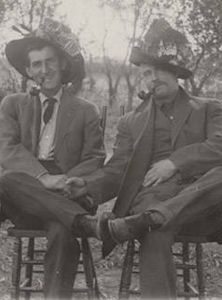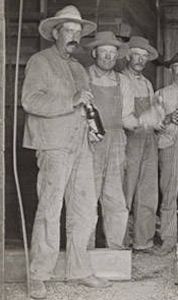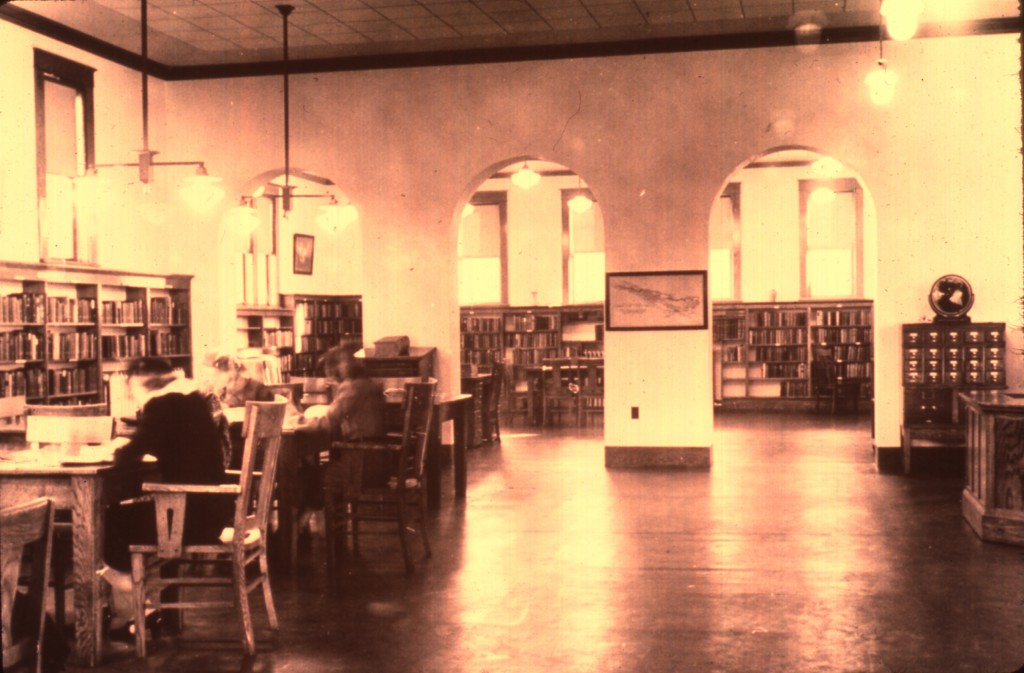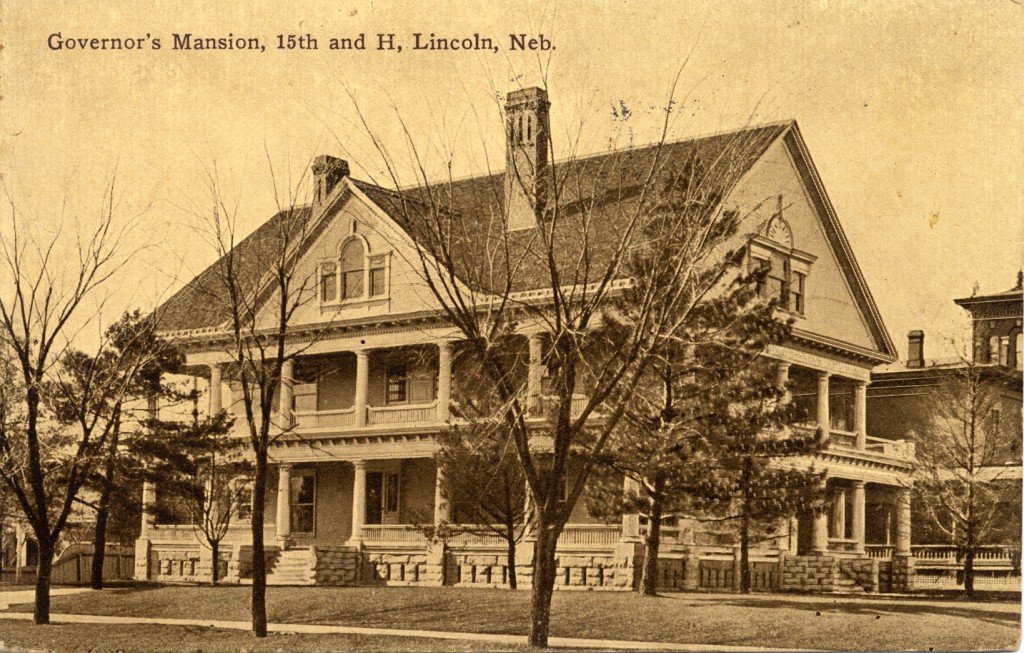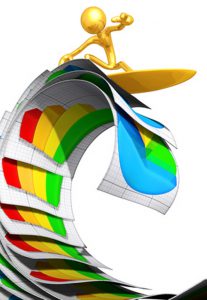Search the Blog
Categories
- Books & Reading
- Broadband Buzz
- Census
- Education & Training
- General
- Grants
- Information Resources
- Library Management
- Nebraska Center for the Book
- Nebraska Memories
- Now hiring @ your library
- Preservation
- Pretty Sweet Tech
- Programming
- Public Library Boards of Trustees
- Public Relations
- Talking Book & Braille Service (TBBS)
- Technology
- Uncategorized
- What's Up Doc / Govdocs
- Youth Services
Archives
Subscribe
Category Archives: General
The Data Dude – Creativity Pt. II
 A few weeks ago, the Dude took an in depth look at creative confidence (part 1) in relation to library staff interactions. This week, the Dude hopes to illustrate how library programs can facilitate this sense of collective creativity among those using the library. Which brings the Dude to another point, what do we call these people? Patrons? (sounds like Betty Draper) Library users? (OK by me, but some say this sounds too much like a drug user or user, and therefore carries negative connotations) Customer? (they don’t really buy things) Library member? (isn’t everyone a member?) Library supporter? (too much like athletic supporter) Reader? (what if they just consume media, hang out, use the Wi-Fi, or check out audio or talking books?) Client? (sounds either too clinical or X-rated) Visitor? Maybe. OK… let’s go with visitor until something better comes along, even though it fails to address the issue of a “virtual visitor”, you know, with e-books, downloads, databases, and such things. If you have suggestions, e-mail or call me. The lack of consensus and uniformity is perplexing to me but it’s time to move on.
A few weeks ago, the Dude took an in depth look at creative confidence (part 1) in relation to library staff interactions. This week, the Dude hopes to illustrate how library programs can facilitate this sense of collective creativity among those using the library. Which brings the Dude to another point, what do we call these people? Patrons? (sounds like Betty Draper) Library users? (OK by me, but some say this sounds too much like a drug user or user, and therefore carries negative connotations) Customer? (they don’t really buy things) Library member? (isn’t everyone a member?) Library supporter? (too much like athletic supporter) Reader? (what if they just consume media, hang out, use the Wi-Fi, or check out audio or talking books?) Client? (sounds either too clinical or X-rated) Visitor? Maybe. OK… let’s go with visitor until something better comes along, even though it fails to address the issue of a “virtual visitor”, you know, with e-books, downloads, databases, and such things. If you have suggestions, e-mail or call me. The lack of consensus and uniformity is perplexing to me but it’s time to move on.
The notion surrounding building creative confidence for library visitors I think centers on building empathy among users, and providing the tools and space for those visitors to work collaboratively so that those relationships have the ability to develop. The library sponsored makerspace has the potential to facilitate both of these things. Most of us have heard of makerspaces, and libraries providing them, but before we delve further into this idea, let’s take a step back and look at what makerspaces are and how they can promote this sort of creativity in the community. According to a 2013 report from Michigan State University, makerspaces are “places where like-minded persons gather to work on personal projects, share tools and expertise as well as learn from each other.” Most of us think of 3D printers when we hear makerspace, but I think the idea transcends just that one tool. There really are a wide variety of things and subjects that can are offered, including (but definitely not limited to) music recording equipment, instruments, sewing machines, crafts, robotics, construction projects, hacking, jewelry, and many others. With such a diverse range of potential offerings, perhaps the best route to take is to talk to your library visitors to determine what interests are out there and to use those resources and skills that already exist. Take advantage of the knowledge and experiences in your community. Many persons with special skills are more than willing to share and exchange ideas. It builds communities and feeds souls. It has the potential to bring like-minded people together and develop lifelong friendships. Jerry Jodloski adequately sums this up: “(It’s) a cooperative, open-source philosophy that helps empower individuals for the greater benefit of the community.” Sounds good to me. Shaka.
Posted in Books & Reading, General, Library Management, Uncategorized
Leave a comment
Throwback Thursday: Interior photo of the Omaha Public Library, circa 1900
Posted in General
Leave a comment
The Data Dude – Public Library Survey
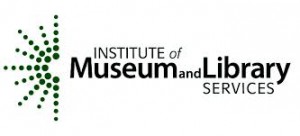 Well, sometimes things might be important but a little fluffy. This week is the week of fluff (or a week off of fluff, if you have a different perspective). The annual IMLS Public Library Survey is set to begin on November 12, 2014. For those of you who are new directors, it might be wise to familiarize yourself with the survey and instructions. Take a peek at the Bibliostat Collect portion of the data services section of the NLC website, which has instructions, tips, and other tidbits to help you complete the survey. Keep in mind that the survey is required for your library to receive state aid if you are accredited. If you aren’t accredited and have no desire (let’s just acknowledge that — there is no shame), you still have an incentive to complete the survey ($200), called Dollar$ for Data. 200 bucks is, well, 200 bucks. The Dude is here to help you throughout the process, understands your frustration with parts of it, and will make every attempt to transmit empathy. Keep in mind that this is the Dude’s first survey, so please be patient and we all will get through it together.
Well, sometimes things might be important but a little fluffy. This week is the week of fluff (or a week off of fluff, if you have a different perspective). The annual IMLS Public Library Survey is set to begin on November 12, 2014. For those of you who are new directors, it might be wise to familiarize yourself with the survey and instructions. Take a peek at the Bibliostat Collect portion of the data services section of the NLC website, which has instructions, tips, and other tidbits to help you complete the survey. Keep in mind that the survey is required for your library to receive state aid if you are accredited. If you aren’t accredited and have no desire (let’s just acknowledge that — there is no shame), you still have an incentive to complete the survey ($200), called Dollar$ for Data. 200 bucks is, well, 200 bucks. The Dude is here to help you throughout the process, understands your frustration with parts of it, and will make every attempt to transmit empathy. Keep in mind that this is the Dude’s first survey, so please be patient and we all will get through it together.
For issues with how to report all the high tech downloadable services that many of you are offering, there is a sleek chart that was created to assist you that is posted on the NLC website. The Dude owes it to his colleagues in OH, KY, and TX for this cheat sheet. I hope it will be of value to you. The Dude realizes the reporting categories aren’t perfect, so keep that in mind.
Finally, the Dude needs to mention that there is a new data element to be aware of, wireless internet sessions – annual. The rationale for collecting this data is that wireless internet availability is an increasing service offered by many libraries. It is important to have national and state data on the use of wireless services in public libraries. The obvious question is: How on earth do I track and report this data? Well, a number of different ways, and there are a number of tips, all described below, that may be helpful to you, your ISP, and tech support person:
- Estimate. This is a new data element, so it is perfectly ok to collect data from a typical day, week, or month and estimate yearly use by doing the math. It is unreasonable to assume you will automatically have a system in place that has collected all of this data. Maybe you do, and that’s great; however, it is acceptable to estimate based on an average week or month.
- Network logs. Data from your Wi-Fi hardware log will generally be the most accurate source for counting wireless sessions. In order to collect accurate data, make sure that your hardware log is set for a minimum of 12-24 hours.
- Network scanning. Every device that connects to your Wi-Fi network broadcasts a unique identifier called a MAC address. A free network scanner like SoftPerfect Network Scanner may help in this collection.
- Web Analytics. Most public Wi-Fi services require authentication to connect. This usually means entering an ID or password. Sometimes, it presents users with a “splash” page requiring them to agree to “terms of service” or “acceptable use” policies. If your library requires authentication, you can track the use with a web analytics tool such as Google Analytics. Make sure you only include data from successful logins.
- Hardware. These may be the more expensive solutions to gathering data, but nonetheless should be mentioned for those looking to upgrade hardware. These include Cisco Meraki, Aerohive, and UniFi.
- Other downloadable software. Other potential solutions worth mentioning include open source PfSense, which has a number of potential uses in addition to reporting and monitoring Wi-Fi use, such as a firewall, router, wireless access point, or server. Another free solution is Who’s on My Wi-Fi, which will track the users and then record the data for later retrieval.
- Old school method. While potentially more intrusive to your library’s users, this is certainly a viable option, especially for smaller libraries. It involves using a clipboard (or maintaining a computer file) and visually monitoring the library users, or require them to sign in at the desk if they use the Wi-Fi. If you are employing this method, make sure you take samples during “normal” times (e.g. not during holidays, special events, etc.), and count each visit as a “session” (e.g. if the library user leaves and then comes back later in the day, count as two sessions).
- Staff use. Include staff use of the Wi-Fi, using the standards outlined in network logs, web analytics, network scanning, software, or the old school method above.
The library network has also made a Best Practices guide available for technical support persons working on gathering this data. Note that it mentions multiplying a weekly sample by 50 to “annualize it”. This accounts for times when the library might be closed or holidays. Our survey instructions indicate to estimate based on 52 weeks; if you library is closed during holiday times please adjust accordingly (e.g. multiply by 50 if necessary to account for closures). Shaka.
Posted in General, Library Management, Technology, Uncategorized
Leave a comment
Halloween Inspiration
Are you still searching for that perfect Halloween costume? How about a historic costume inspired by the clothing choices of Nebraskan’s from 100 years ago. You can find plenty of inspiration in Nebraska Memories. There is a wide variety of options ranging from formal to informal attire.
Let’s start out with looking at some of the more formal apparel. Men it looks like you are going to need a three piece suit, shirt, tie and a hat if you have one. Ladies you are going to need a long skirt and a blouse with a high neckline. You may also want to find a hat to complete your outfit.
Men if the idea of wearing a three piece suit doesn’t appeal to you there are plenty of other options. How about dressing as a baseball player from 1914 or a football player from 1909? Ladies if you are going to be sports fan it appears that a hat is required. If you actually want to participate in sports you will need to find a pair of bloomers or a nice ruffled cloth cap.
If you haven’t spotted a winning costume idea yet here are a few more. I really wish we knew the story behind the picture of the two men smoking their pipes while wearing ladies’ hats.
I hope these images provided you with a bit of inspiration as you are working on your Halloween costume. If these looks are a too boring you can always complete the outfit by applying some fake blood and zombie makeup. Just like the folks in these pictures remember not to smile.
Visit Nebraska Memories to search for or browse through many more historical images digitized from photographs, negatives, postcards, maps, lantern slides, books and other materials.
Nebraska Memories is a cooperative project to digitize Nebraska-related historical and cultural heritage materials and make them available to researchers of all ages via the Internet. Nebraska Memories is brought to you by the Nebraska Library Commission. If your institution is interested in participating in Nebraska Memories, see http://nlc.nebraska.gov/nebraskamemories/participation.aspx for more information, or contact Beth Goble, Historical Projects Librarian, or Devra Dragos, Technology & Access Services Director.
October is National Reading Group Month!
October is National Reading Group Month!
To help you celebrate your reading group, here are some novels that feature book groups you can check out from the Nebraska Library Commission Book Club Collection.
The Guernsey Literary and Potato Peel Pie Society by Mary Ann Shaffer
21 Copies
 Available to Talking Book Service users
Available to Talking Book Service users
Request This Kit
Jane Austen Book Club by Karen Joy Fowler
13 Copies (also 1 Video (DVD) copy)
Request This Kit
The Reading Group by Elizabeth Noble
7 Copies
Request This Kit
Reading Lolita in Tehran by Azar Nafisi
12 Copies
Request This Kit
Posted in Books & Reading, General, Information Resources
Leave a comment
Throwback Thursday: Burlington railroad yards, Havelock, Nebraska, circa 1910-1920
Photo of a round house at the Burlington Yards in Havelock, Nebraska. This photograph is part of a collection that was donated to the Library Commission for Nebraska Memories. If you have old Nebraska photos that you would be interested in donating, please contact the Library Commission and check out Nebraska Memories at www.memories.ne.gov.
Posted in General, Nebraska Memories
1 Comment
The Data Dude on Creative Confidence
Libraries, now more than ever, need creativity. A lot of them are doing a really great job of hitting the creativity mark, but there are many other examples of stellar strategic planning, flashy presentations, generalized stuffiness (yeah, that’s right, the Dude tells it like it is, and pleads guilty to being stuffy hisself), pretension, and interactive charts that illustrate (or continue) crappy ideas that no one in the real world cares about. Now, before your blood pressure starts to climb you can put your Beta-blocker away because the Dude isn’t saying that analytical thinking and project planning are not important. They obviously are. What the Dude is saying is that there is a huge and often overlooked benefit to jimmying your creativity (and the collective creativity of others) to come up with fresh new ideas. One major obstacle, admittedly for the Dude and most likely others, is creative confidence. Creative confidence is a term coined by brothers David and Tom Kelly and explored in depth in their book “Creative Confidence: Unleashing the Creative Potential within Us All”. Like most of those reading this (OK, for the handful), the Dude sometimes has some off the wall ideas. The Dude is realizing and learning the importance of not suppressing these, but it’s hard. Kids come into the world with this uncaring sense of creativity, but what frequently happens is that other kids (or even adults) laugh, poke fun at, or criticize those not yet ripe ideas when they are expressed. Unfortunately, this is a creative confidence buzzkill. Many of us suffer from the lack of creative confidence as adults not because we are not creative (most of us do have the capacity) but because of some (or many) of the creative confidence killers we experienced as kids. The Dude admits suffering from creative confidence anxiety, but the Dude is trying to work on it, with the help of the Brothers Kelley and a deep look into his soul.
Creative confidence now more than ever is essential to 21st century libraries and librarians. The Dude wishes to stress a few important prescriptions from the Brothers Kelley. One: flip the problem/solution model on its head, and come at things from a human side. Go out and find what people value, then find a technology or solution that addresses it (instead of discovering a new technology and then trying to fit it into something or trying to manufacture value). Two: Get people involved to the point that they are “raving fans”. Often this starts with someone within your organization (in this case your library) starting small fires or small experiments. Embrace their quirkiness, passion, and courage to bring the ideas forward. It’s contagious in a good way. If you are a Director or Administrator, be what the Kelley’s call a “squinter”. Squinters are able to look past the surface details of an idea; rather, they look not at its perfection but the overall shape of it. Squinters have people on their team that can work collaboratively to build on the essence of the idea, reshape it, remanufacture it, and change it into something classy or colossal. Teams that have the support and encouragement to bring less than polished ideas to the table are able to develop empathy for one another and build on their ideas. This is essential to the creative process, and really, essential to our lives. The effect is that this builds long lasting relationships that result in compassion, belonging, and connection.
How can libraries support creativity and build creative confidence, especially in younger people? The Dude thinks that these ideas are important both for staff/staff relationships, but also for staff/library visitor relationships, even though the nature of this post has been a focus on staff/staff relationships. The Dude is thinking about the staff/visitor connection and will probably explore this more in subsequent blog posts. For today, things might be aptly summed up by Tom Kelley: “Creative confidence is the ability to come up with breakthrough ideas and the courage to act on them.” For more info, take the time to watch the Kelley’s Creative Confidence Talk at Google and the Sir Ken Robinson’s website and TED Talks (“Imagination is the source of all human achievement”). Both are highly recommended. You might even want to incorporate these segments into your weekly or monthly staff meetings, if you have those. Shaka.
Posted in Books & Reading, General, Library Management, Uncategorized
2 Comments
Apply for MakerLab by November 17
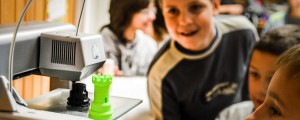 The Young Adult Library Services Association (YALSA), in collaboration with 3D Systems, will support 3D Systems’ mission to build digital literacy and expand access to 21st century tools like 3D design, 3D Printing and 3D scanning for young adults across the nation, through the new MakerLab Club initiative. YALSA members are eligible to become part of the MakerLab Club and for a limited time, apply for 3D printer donations from 3D Systems as part of MakerLab Club membership.
The Young Adult Library Services Association (YALSA), in collaboration with 3D Systems, will support 3D Systems’ mission to build digital literacy and expand access to 21st century tools like 3D design, 3D Printing and 3D scanning for young adults across the nation, through the new MakerLab Club initiative. YALSA members are eligible to become part of the MakerLab Club and for a limited time, apply for 3D printer donations from 3D Systems as part of MakerLab Club membership.
Through the online application, libraries must illustrate a commitment to creating or expanding makerlabs or maker programming and to providing community access to 3D printers and digital design. Applications will be accepted through Nov. 17, 2014. After the application deadline, applications will be put through a competitive evaluation process to determine the recipients of the donated equipment.
“This is a grand opportunity for libraries across the nation to really advance their libraries’ digital literacy” said YALSA President Christopher Shoemaker. “Teens will have the opportunity to experience digital literacy in a way they’ve never experienced before. We are very excited that this opportunity exists.”
“We are proud to launch The MakerLab Club, providing critical equipment, training, and support to libraries and museums across our country,” said Neal Orringer, vice president of Partnerships and Alliances, 3DS. “Today, libraries and museums are democratizing making in their local communities and reinforcing their longstanding position as centers of the arts, education and culture. We urge anyone interested in getting involved to contact us and get started setting up your lab today.”
The MakerLab Club is a new community for thousands of U.S. Libraries and museums chartered to advance 3D digital literacy through public access to 3D printing technology. Members of the MakerLab Club will receive other benefits such as access to training webinars and curriculum. To learn more about the MakerLab Club and to apply for a donated 3D printer, please visit 3D Systems’ official MakerLab Club page.
Contact:
Anna Lam
Communications Specialist
Young Adult Library Services Association (YALSA)
Posted in General, Programming, Technology, Youth Services
Leave a comment
Finalists for 2015 One Book One Nebraska Announced
FOR IMMEDIATE RELEASE:
October 14, 2014
FOR MORE INFORMATION:
Mary Jo Ryan
402-471-3434
800-307-2665
Finalists for 2015 One Book One Nebraska Announced
Four nonfiction books and three novels——all stories with ties to Nebraska and the Great Plains——are the finalists for the 2015 One Book One Nebraska statewide reading program. The finalists are:
Benediction, by Kent Haruf
Death Zones and Darling Spies: Seven Years of Vietnam War Reporting, by Beverly Deepe Keever
Eagle Voice Remembers: An Authentic Tale of the Old Sioux World, by John G. Neihardt
The Floor of the Sky, by Pamela Carter Joern
Free Radical: Ernest Chambers, Black Power, and the Politics of Race, by Tekla Agbala Ali Johnson
Goodnight, Nebraska, by Tom McNeal
The Loren Eiseley Reader, by Loren Eiseley
The One Book One Nebraska reading program, now in its eleventh year, is sponsored by the Nebraska Center for the Book, Humanities Nebraska, and Nebraska Library Commission. It encourages Nebraskans across the state to read and discuss the same book, chosen from books written by Nebraska authors or that have a Nebraska theme or setting. A committee of the Nebraska Center for the Book selected the seven finalists from a list of twenty-five titles nominated by twenty-nine Nebraskans. In the coming weeks, Nebraska Center for the Book board members will vote on the 2015 selection.
The choice for the 2015 One Book One Nebraska will be announced at 5:30 p.m. at the Celebration of Nebraska Books on November 8 at the Nebraska Library Commission, 1200 N Street in downtown Lincoln. This year’s One Book One Nebraska, Once Upon a Town: The Miracle of the North Platte Canteen by Bob Greene, will be featured at the Celebration, see http://onebook.nebraska.gov/2014/index.aspx or https://www.facebook.com/OneBookOneNebraska for more information about ongoing 2014 One Book One Nebraska activities.
The Celebration of Nebraska Books is scheduled for 3:30 – 6:30 p.m., with the Nebraska Center for the Book Annual Meeting to be held at 2:30 p.m. and an Awards Reception, book signings, and announcement of the 2015 One Book One Nebraska book choice concluding the festivities. Awards will be presented to the winners of the 2014 Nebraska Book Awards, and some of the winning authors will read from their work. A list of winners is posted at http://centerforthebook.nebraska.gov/awards.html. The event will also recognize Omaha’s Bookworm bookstore, named as the recipient of the 2014 Jane Geske Award. The Jane Geske Award recognizes a Nebraska association, organization, business, library, school, academic institution, or other group that has made an exceptional, long-term contribution to one or more of these fields in Nebraska: Literacy, Reading, Book Selling, Books, Libraries, and/or Writing in Nebraska. The Celebration of Nebraska Books is sponsored by the Nebraska Center for the Book, Nebraska Library Commission, and University of Nebraska Press. For more information, contact Mary Jo Ryan, 402-471-3434 or 800-307-2665. Confirmed presenters will be announced at www.centerforthebook.nebraska.gov and http://www.facebook.com/NebraskaCenterfortheBook
The Nebraska Center for the Book is housed at the Nebraska Library Commission and brings together the state’s readers, writers, booksellers, librarians, publishers, printers, educators, and scholars to build the community of the book, supporting programs to celebrate and stimulate public interest in books, reading, and the written word. The Nebraska Center for the Book is supported by the Nebraska Library Commission.
As the state library agency, the Nebraska Library Commission is an advocate for the library and information needs of all Nebraskans. The mission of the Library Commission is statewide promotion, development, and coordination of library and information services, bringing together people and information.
###
The most up-to-date news releases from the Nebraska Library Commission are always available on the Library Commission Website, http://nlc.nebraska.gov/publications/newsreleases
Posted in Books & Reading, General
Leave a comment
Throwback Thursday: Interior photo of the North Platte Public Library, circa 1940
Posted in General
Leave a comment
The Data Dude – Surveys, Scooters, and the Soul
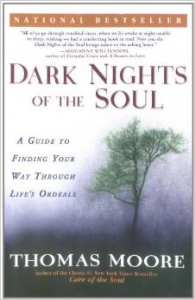 Shaka. First, an update on the Digital Inclusion Survey: Thanks to everyone who has completed the survey. We are doing very well, comparatively speaking, with 56 responses so far. I know you all are busy with more important things, so I appreciate your time and effort. Reminder for those who haven’t completed it (and who by happenstance might actually be reading this blog), or who have completed the survey and have not completed the speed test, it will only take you a few minutes, so please help out.
Shaka. First, an update on the Digital Inclusion Survey: Thanks to everyone who has completed the survey. We are doing very well, comparatively speaking, with 56 responses so far. I know you all are busy with more important things, so I appreciate your time and effort. Reminder for those who haven’t completed it (and who by happenstance might actually be reading this blog), or who have completed the survey and have not completed the speed test, it will only take you a few minutes, so please help out.
When I started working at the Commission, I was met with a new dilemma: Where to park. I talked to a few people I know who had a more advanced knowledge of the downtown commute situation, and the going rate for parking downtown is around $65/month. That didn’t appeal to me much. My plan for the first week was to park on the street, on the edge of downtown, and walk (about 8 blocks). I enjoyed these walks, even on the days I was running late. This feeling might have been a result of decent weather, but nonetheless, it allowed me time to clear my head and breathe the open air. There is a great benefit to that. However, I continued to listen to others (who strongly cautioned me that walking this longer distance would be more difficult in poor weather and I would regret it); and thus landed a spot in one of the state parking garages at the lower $30/month rate. A number of Commission employees ride bikes to work, and this type of activity, refreshingly, is perfectly acceptable and encouraged here. As much as I would like to ride, it just isn’t practical with my kids and the fact that I live a bit far from downtown.
When I began to reflect on parking in the garage, I decided pretty quickly that I didn’t like it. In fact, I almost instantly hated it. Although it was closer (3 blocks instead of 8), the overall time that it took me was the same (about 12 minutes), when taking into account driving further into the depths of downtown, looping around to the garage, driving up the garage, etc. I decided that I would rather spend this time walking than sitting in the car. Not to mention, many times I forgot where the car was parked, and had to walk around the garage trying to find it.
Solution: Park on the street, enjoy the fresh air, and ride in on a scooter (the human powered one). Walk on bad weather days. On really bad weather days (e.g. the occasional blizzard), pay the $5 to park in the garage next to the commission. I rode my scooter for the first time last week, and thoroughly enjoyed the experience. I bought a Razor A6 Lux scooter, and park it in the office. If you are ever visiting the Commission and want to take it for a spin, stop in and borrow it. You are welcome to give it a try. Even if you don’t want to ride the scooter, come in anyway for a chat, either about the scooter, surveys, souls, or anything else that is on your mind. Scooter commute time: About 5 minutes. The reason I’m writing about this is for multifold reasons. For one, riding a scooter provides me with the opportunity to connect with nature, results in a relatively quick commute (if necessary–just kick more), and a return to an activity that is reminiscent of the fun most of us experienced when we were younger. Many of us don’t do these kinds of things anymore. It has taken me only a little time to get over what other people think about riding the scooter. I’ve gotten a few looks – but the point is that I’ve worked past worrying what others think (at least when it comes to riding my scooter). I’m hoping that the scooter will be a catalyst for this feeling in other parts of my life.
Recently, I discovered the author Thomas Moore (Dark Nights of the Soul). The circumstances that led to this discovery are multifaceted, complex, coincidental, personal, and painful. It seems to me that the realization and acceptance of Moore’s philosophy is providing me with a formidable alternative (or response) to my own dark struggles with nihilism, purpose, identity, and soul. To acknowledge this provides me with at least some sense of relief, although I’m sure this feeling will come and go, wax and wane over time. I’m beginning to see nihilism for what it is (and ultimately what Nietzsche saw it as): a means to an end rather than an end in itself. It’s refreshing to see it that way. It gives me newfound hope to draw that conclusion; hope of transforming from someone who has related to at least the spirit of the pessimism of the Rust Cohle character from HBO’s True Detective (“It means I’m bad at parties”) to someone who believes he can find a sense of contentedness from within himself and embrace (rather than be consumed by) what Moore calls the dark night. I suppose the scooter may be playing at least some role in this. I am working on another post related to Thomas Moore, the dark night, and how this may relate more to libraries and life, but for today, I will leave you with the following quote from Moore’s Introduction in the book Dark Nights of the Soul so that you might have a bit more depth of understanding what he is talking about and what’s on my mind (you might even want to check the book out from your local library):
“At one time or another, most people go through a period of sadness, trial, loss, frustration, or failure that is so disturbing and long-lasting that it can be called a dark night of the soul. If your main interest in life is health, you may quickly try to overcome the darkness. But if you are looking for meaning, character, and personal substance, you may discover that a dark night has many important gifts for you.”
Posted in Books & Reading, General, Uncategorized
1 Comment
“Grantseeking Basics” and “Introduction to Finding Funders” training October 28
The Love Library at the University of Nebraska – Lincoln will host a free workshop on grantseeking for nonprofit organizations on Tuesday, October 28th from 10:00am to 12:00pm in Love Library, Room 110. The sessions will be led by Kief Schladweiler, Funding Information Network Services Specialist with the Foundation Center (http://foundationcenter.org). Mr. Schladweiler will highlight the electronic and print resources available for your free use at the University of Nebraska – Lincoln’s Love Library, a Funding Information Network partner of the Foundation Center.
Grantseeking Basics
Gain an introduction to the world of foundation fundraising. Are you a representative of a nonprofit organization? New to fundraising? Do you want to learn how the funding research process works, and what tools and resources are available? Learn how to become a better grantseeker! We will cover: what you need to have in place before you seek a grant; the world of grantmakers; the grantseeking process; and available tools and resources.
Introduction to Finding Funders
This session provides an introduction to the Foundation Center’s comprehensive online database, Foundation Directory Online Professional. Learn how to create customized searches to develop targeted lists of foundations that will match your organization’s funding needs. We will spend time exploring Power Search, which allows you to search across nine Foundation Center databases – grantmakers, grants, companies, 990s, news, jobs, RFPs, nonprofit literature, and IssueLab reports.
Save a Place for Yourself
Please come if you can, and bring friends and associates.
To guarantee a seat, please contact Bob Bolin at the UNL Libraries at:
(402) 489-4926 or rbolin2@unl.edu
Kief Schladweiler has been the Foundation Center’s Funding Information Network Services Specialist since 2005. Prior to that he served as the Center’s online librarian for several years. He joined the Foundation Center in 1999 after working as a reference librarian for The New York Public Library. He received his M.A. in Library and Information Science from the University of Wisconsin-Madison.
Health Happens in Libraries…Continues
 WebJunction, in partnership with ZeroDivide and with support from the Institute of Museum and Library Services, will expand the focus of their Health Happens in Libraries program to magnify the role of public libraries as key contributors to community health. They will partner with public libraries and health information experts to develop health competency pathways that library staff can use to advance services in common community health topics. They’ll also work with 3 – 5 public libraries and their local health partners to co-create community engagement models, and share those models broadly. And finally, a range of communications resources will be developed to help library staff advocate with members of local communities about how libraries help in health and wellness, and these resources will be freely available for use by any library. You can read the full post “Connecting for Care in Your Community” about their recent and upcoming work at WebJunction.org.
WebJunction, in partnership with ZeroDivide and with support from the Institute of Museum and Library Services, will expand the focus of their Health Happens in Libraries program to magnify the role of public libraries as key contributors to community health. They will partner with public libraries and health information experts to develop health competency pathways that library staff can use to advance services in common community health topics. They’ll also work with 3 – 5 public libraries and their local health partners to co-create community engagement models, and share those models broadly. And finally, a range of communications resources will be developed to help library staff advocate with members of local communities about how libraries help in health and wellness, and these resources will be freely available for use by any library. You can read the full post “Connecting for Care in Your Community” about their recent and upcoming work at WebJunction.org.
Resource Review
- The full archive is now available for the September 2014 WebJunction webinar: Health Happens in Libraries: Looking Ahead to 2015 Open Enrollment. Presenters from the Centers for Medicare and Medicaid Services, Office of Minority Health, and Carnegie Library of Pittsburgh shared strategies and resources to connect with partners and support patrons who may have information needs regarding the health insurance marketplace, and how to understand and utilize their new coverage.
- Enroll America is hosting a free webinar series regarding Effective Strategies for the Second Open Enrollment Period, including a focus on Health Insurance Literacy in a Monday, 10/20 session at 2 PM ET. Library staff or partners interested in community outreach on health topics may benefit from the information in this series. Archived recordings of sessions will also be made available.
- October is Health Literacy Month! Great resources to help your organizations, partners, and community members understand what health literacy is, why it matters, and how to strengthen it are available from the National Network of Libraries of Medicine, Centers for Disease Control and Prevention, and MedlinePlus.
Apply by October 15 to Host Smithsonian Exhibit on Work
![]() Nebraska libraries are encouraged to apply NOW to host the next Museum on Main Street exhibition, “The Way We Worked.” The exhibit explores work as a central element of American culture and traces changes in the work environment over the past 150 years. This opportunity is offered through Humanities Nebraska. For more information see http://humanitiesnebraska.org/program/museum-on-main-street/ — be sure to scroll down to the Apply to host “The Way We Worked link on the right side of the page.
Nebraska libraries are encouraged to apply NOW to host the next Museum on Main Street exhibition, “The Way We Worked.” The exhibit explores work as a central element of American culture and traces changes in the work environment over the past 150 years. This opportunity is offered through Humanities Nebraska. For more information see http://humanitiesnebraska.org/program/museum-on-main-street/ — be sure to scroll down to the Apply to host “The Way We Worked link on the right side of the page.
Posted in General, Programming, Public Relations
Leave a comment
“Building STEAM with Día” mini-grants: Applications due Oct. 17
The Association for Library Service to Children (ALSC), a division of the American Library Association, is now accepting mini-grant applications from libraries interested in developing and implementing a “Building STEAM with Día” program. Intended as an expansion of El día de los niños / El día de los libros, the mini-grants will be awarded to libraries that demonstrate a need to better address the diverse backgrounds within their communities and develop culturally diverse and appropriate STEAM (Science, Technology, Engineering, Arts, and Math) programs. Apply by October 17. Visit http://dia.ala.org/content/2015-building-steam-d%C3%ADa-mini-grants-available for more information.
Throwback Thursday: Old Governor’s Mansion, circa 1910
Posted in General, Nebraska Memories
2 Comments
The Data Dude – Broadband Blues
For this week, the Dude takes a look at broadband connectivity and download speeds. For Nebraska, the Dude created a map of Nebraska libraries by download speed, with the figures from the most recent public library survey (2012-13 FY). But before we get to that map—-and let’s just be honest, we might not get to it at all, the Dude needs to mention the sleepy little town of Poynette, Wisconsin (population: around 2500). Something tells me this town is the kind of place (much like many parts of rural Nebraska) where a yellow traffic light refreshingly means slow down rather than speed up. Why is Poynette worth mention? Well, recently, on September 24, the library there was selected to receive a boost to their broadband connection as a part of a 4.2 million dollar statewide upgrade that included 350 total libraries. Now, when the Dude read this, his initial thought was that the speed must be in line with some of the fiber connections in parts of Nebraska. The Dude recently talked to a certain Nebraska librarian on the phone about the Digital Inclusion Survey speed test, and the fiber-connected librarian reported download speeds of around 75-80 Mbps. Stick that in your shorts. Poynette’s speed increased from a measly (by comparison) 3.0 to 10 Mbps.
How did we get here, spending copious amounts of hard earned cash on “high speed” connectivity, or “broadband” that, let’s face it, by comparison gets kicked in the same shorts mentioned above by the rest of the world. But first, let’s retract to a definition of “broadband”. According to the FCC, broadband (“high speed”), “may range from as low as 200 kilobits per second (kbps)…to 30 megabits per second (Mbps).” Really? 200 kilobits? According to a nifty download time tool the Dude found, it would take over 9 minutes to download a 1 GB file at the rate of 256 kbps (just over 200 Kbps), while the same file would take 17 seconds on an 8 Mbps connection, 14 seconds on a 10 Mbps connection, and just over 1 second on a 100 Mbps connection. Some Nebraska libraries report speeds in excess of 100 Mbps. Go to the map linked at the outset of this post, uncheck everything at the bottom of the map, and you are left with the 5 libraries that reported those speeds on last year’s survey. And the locations will probably surprise you.
Now, for a little more focus to this rant, or just a little more rant, however you might see it. You all are certainly capable of going to the map, comparing your town with the town next door, and submitting your own “let’s keep up with the Joneses” proposals to increase connectivity, access, and speed. But why care about the bigger picture here; or how is that picture even illustrated? Well, for one, the U.S. lags behind, waaaaay behind, the rest of the world when it comes to “high speed” access. And the reality is that most of us Americans (in general) and American librarians (in particular) care about taking that in the shorts, again. Libraries are supposed to be the leaders when it comes to this sort of stuff, but consider this: The U.S. (subject to debate, of course, like everything else, but in particular the U.S government is likely deserving of the title: Inventor of the Internet[1]) is nowhere near the world leader in connectivity speed. Susan Crawford (author of Captive Audience: The Telecom Industry and Monopoly Power in the New Gilded Age), summaries this divide by noting that in Hong Kong, a 500 Mbps connection (yeah, you read that right, 500 Mbps!) can be had by consumers for about 25 bucks per month. In Seoul, the same service costs about $30 per month, and you can get connected in just a few days.
Why is this important? Well, the Dude thinks it is because every person should have access to basic services, and in this day and age, speed is as much of a basic service as connectivity. As most librarians know, how can kids do homework, how can a person apply for government benefits, research basic health information, do all the things that fall under the umbrella of information literacy without even basic services. And the kids need that 500 Mbps connection for homework. Well, maybe not exactly, but as things evolve, high connectivity speeds become more and more relevant. Furthermore, the Dude likes to think that the U.S. is just better than that (even in areas where a consumer has the option of something more in line with what they can get in Hong Kong or Seoul—say NYC, they pay a lot more than $30/month), by simply recognizing the value of wanting to download large files in shorter amounts of time, stream HD video, or have HD video conferencing for educational or entertainment purposes. According to Ookla, the U.S. ranks 25th on the current list of connectivity speed (with a national average of 29.85 Mbps and a Nebraska average of 26.8). While that doesn’t sound too bad, consider this: the U.S. is outpaced in speed by Bulgaria, the Aland Islands, Estonia, Latvia, the Republic of Moldova, Andorra, Macau, and Lithuania, and others. The Dude readily admits he has never heard of half of those countries, so it is time to check the map. This may be the part of a multi-post series on this topic, and be patient with the Dude because it may take some time. But for now: Shaka.
[1] For more on the invention of the internet (and the article ties into this blog post appropriately), the Dude highly recommends this article published by Slate by Farhad Manjoo.
Posted in General, Technology, Uncategorized
Leave a comment
Open Enrollment for 2015 Health Insurance coverage begins November 15th
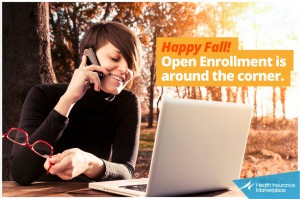 A one-page guide to the Health Insurance Marketplace
A one-page guide to the Health Insurance Marketplace
Here’s a quick rundown on the most important things to know about the Health Insurance Marketplace, sometimes known as the health insurance “exchange.” Follow the links for more information on each topic.
Important. 2014 Marketplace Open Enrollment ended March 31. You can still buy a Marketplace health plan only if you qualify for a special enrollment period. You can apply for Medicaid and CHIP any time. Find out if you qualify for a Special Enrollment Period or Medicaid and CHIP. Open Enrollment for 2015 coverage starts November 15, 2014.
The Health Insurance Marketplace helps uninsured people find health coverage. Fill out a Marketplace application and we’ll tell you if you qualify for:
- Private health insurance. Plans cover essential health benefits, pre-existing conditions, and preventive care. Some plans include dental coverage. In other cases, free-standing dental plans are available.
- Lower costs based on your household size and income. You can preview plans available in your area right now, with prices based on your income and household size. Most people who apply will qualify for lower costs.
- Medicaid and the Children’s Health Insurance Program (CHIP). These programs cover millions of families with limited income. If it looks like you qualify, we’ll share information with your state agency and they’ll contact you. Many but not all states are expanding Medicaid to cover more people. Find out what Medicaid expansion means for you.
Most people are eligible to use the Marketplace. Learn more about immigration status and eligibility.
Most people must have health coverage or pay a penalty. If you don’t have coverage in 2014, you’ll pay a fee of either 1% of your income, or $95 per adult ($47.50 per child), whichever is higher. You’ll pay the fee on your 2015 income taxes.
Some people qualify for an exemption from the fee, based on income or other factors.
You’re considered covered if you have Medicare, Medicaid, CHIP, any job-based plan, any plan you bought yourself, COBRA, retiree coverage, TRICARE, VA health coverage, or some other kinds of health coverage.
You can also buy a plan outside the Marketplace and still be considered covered. If you buy outside the Marketplace, you won’t be eligible for premium tax credits or lower out-of-pocket costs based on your income.
If you’re eligible for job-based insurance, you can consider switching to a Marketplace plan. But you won’t qualify for lower costs based on your income unless the job-based insurance isn’t considered affordable or doesn’t meet minimum requirements.
If you have Medicare, you’re considered covered and don’t have to make any changes. If you have Medicare, you can’t use the Marketplace to buy a supplemental plan or dental plan.
Learn how to apply through the Marketplace—online, by phone, or with a paper application..
Questions? Call 24 hours a day, 7 days a week: 1-800-318-2596 (TTY: 1-855-889-4325)
Book Award Winners to be Honored at November 8 Celebration of Nebraska Books
FOR IMMEDIATE RELEASE:
September 29, 2014
FOR MORE INFORMATION:
Mary Jo Ryan
402-471-3434
800-307-2665
Book Award Winners to be Honored at November 8 Celebration of Nebraska Books
An awards presentation ceremony will highlight the Nebraska Center for the Book’s Celebration of Nebraska Books on November 8 at the Nebraska Library Commission, 1200 N Street, in downtown Lincoln. Winners of the 2014 Nebraska Book Awards will be honored and the celebration will include readings by some of the winning authors. And the winners are:
2014 Nebraska Book Award Winners
Anthology
The Untidy Season: An Anthology of Nebraska Women Poets, by Heidi Hermanson, Liz Kay, Jen Lambert, and Sarah McKinstry-Brown, Editors. The Backwaters Press.
Anthology Honor
The Northwoods Hymnal, by Luke A. Hawley. River Otter Press.
Children
Simpson’s Sheep Won’t Go to Sleep!, by Bruce Arant. Peter Pauper Press, Inc.
Cover/Design/Illustration
Simpson’s Sheep Won’t Go to Sleep!, by Bruce Arant. Peter Pauper Press, Inc.
Fiction
Stranded, by Alex Kava. Doubleday.
Fiction Honor
Haven’s Wake, by Ladette Randolph. University of Nebraska Press.
Non-Fiction: Biography
Black Print with a White Carnation: Mildred Brown and the Omaha Star Newspaper, 1938-1989, by Amy Helene Forss. University of Nebraska Press.
Non-Fiction: History
The Last Days of the Rainbelt, by David J. Wishart, University of Nebraska Press.
Non-Fiction: Natural History
Yellowstone Wildlife: Ecology and Natural History of the Greater Yellowstone Ecosystem, by Paul A. Johnsgard and photographs by Thomas D. Mangelsen. University Press of Colorado.
Non-Fiction: Reference
Witness: A Húnkpapȟa Historian’s Strong-Heart Song of the Lakotas, by Josephine Waggoner and Emily Levine Editor. University of Nebraska Press.
Poetry
Saving Singletrees, by Leo Dangel. WSC Press.
Young Adult
Eleanor & Park, by Rainbow Rowell. St. Martin’s Griffin
The celebration, free and open to the public, will also feature presentation of the Nebraska Center for the Book’s Jane Geske Award to a Nebraska organization for exceptional contribution to literacy, books, reading, libraries, and literature in Nebraska. The Jane Geske Award commemorates Geske’s passion for books, and was established in recognition of her contributions to the well-being of the libraries of Nebraska. Jane Pope Geske was a founding member of the Nebraska Center for the Book, former director of the Nebraska Library Commission, and a long-time leader in Nebraska library and literary activities.
This year the Celebration marks the tenth year of One Book One Nebraska, selecting and promoting a book title for Nebraskans to read to celebrate the literary richness of our state. The Miracle of the North Platte Canteen by Bob Greeneis the 2014 One Book One Nebraska, and Nebraska libraries and other literary and cultural organizations across the state are hosting activities and events to encourage all Nebraskans to read and discuss this book (see http://onebook.nebraska.gov.)
The Nebraska Center for the Book Annual Meeting will be held at 2:30 p.m.—just prior to the 3:30-6:30 p.m. Celebration. An awards reception honoring the winning authors, book signings, and announcement of the 2015 One Book One Nebraska book choice will conclude the festivities.
The Celebration of Nebraska Books is sponsored by Nebraska Center for the Book, Humanities Nebraska, and Nebraska Library Commission, in partnership with the Friends of the University of Nebraska Press. The Nebraska Center for the Book is housed at the Nebraska Library Commission and brings together the state’s readers, writers, booksellers, librarians, publishers, printers, educators, and scholars to build the community of the book, supporting programs to celebrate and stimulate public interest in books, reading, and the written word. The Nebraska Center for the Book is supported by the Nebraska Library Commission.
As the state library agency, the Nebraska Library Commission is an advocate for the library and information needs of all Nebraskans. The mission of the Library Commission is statewide promotion, development, and coordination of library and information services, “bringing together people and information.”
###
The most up-to-date news releases from the Nebraska Library Commission are always available on the Library Commission Website, http://nlc.nebraska.gov/publications/newsreleases.
Posted in Books & Reading, General
Leave a comment
The Fruits of the Earth
Last Friday, September 26th, was the 240th anniversary of Johnny Appleseed’s birth. Although he died in 1845 and never visited the plains of what would become Nebraska, growing, eating, and celebrating apples have become an important part of harvest time in Nebraska. Last Friday was also the first day of the Applejack Festival in Nebraska City. At this time of year many of us enjoy going to the festival, visiting an orchard, and bringing home apples to fill freezers, pantries and bellies. Plus getting fresh cider to enjoy when the work is done.
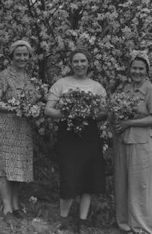 Nebraska Memories participants have contributed several images about apples, from “start to finish”. The smiling ladies in the photo on the left from the Durham Museum collection are holding bouquets of apple blossoms from the trees in the orchard they are standing in. After harvest growers displayed their best at the Nebraska State Fair.
Nebraska Memories participants have contributed several images about apples, from “start to finish”. The smiling ladies in the photo on the left from the Durham Museum collection are holding bouquets of apple blossoms from the trees in the orchard they are standing in. After harvest growers displayed their best at the Nebraska State Fair. 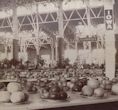 The stereographic photo on the right in the Nebraska State Historical Society collection was taken by John Nelson. A huge variety of apples were on display that year in the Horticulture Building (now called Industrial Arts Building) . Use your imagination to color all these beauties!
The stereographic photo on the right in the Nebraska State Historical Society collection was taken by John Nelson. A huge variety of apples were on display that year in the Horticulture Building (now called Industrial Arts Building) . Use your imagination to color all these beauties! 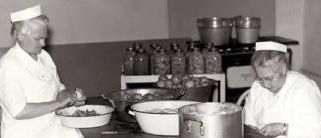
After harvest it was also time to preserve such bounty for later enjoyment. The women canning apples in this photo from the Alegent Health Immanual Medical Center collection worked at the Immanuel Deaconess Institute. They already have quite a few jars made!
Visit Nebraska Memories to search for or browse through many more historical images digitized from photographs, negatives, postcards, maps, lantern slides, books and other materials.
Nebraska Memories is a cooperative project to digitize Nebraska-related historical and cultural heritage materials and make them available to researchers of all ages via the Internet. Nebraska Memories is brought to you by the Nebraska Library Commission. If your institution is interested in participating in Nebraska Memories, see http://nlc.nebraska.gov/nebraskamemories/participation.aspx for more information, or contact Beth Goble, Historical Services Librarian, or Devra Dragos, Technology & Access Services Director.
Posted in General, Nebraska Memories
Leave a comment
